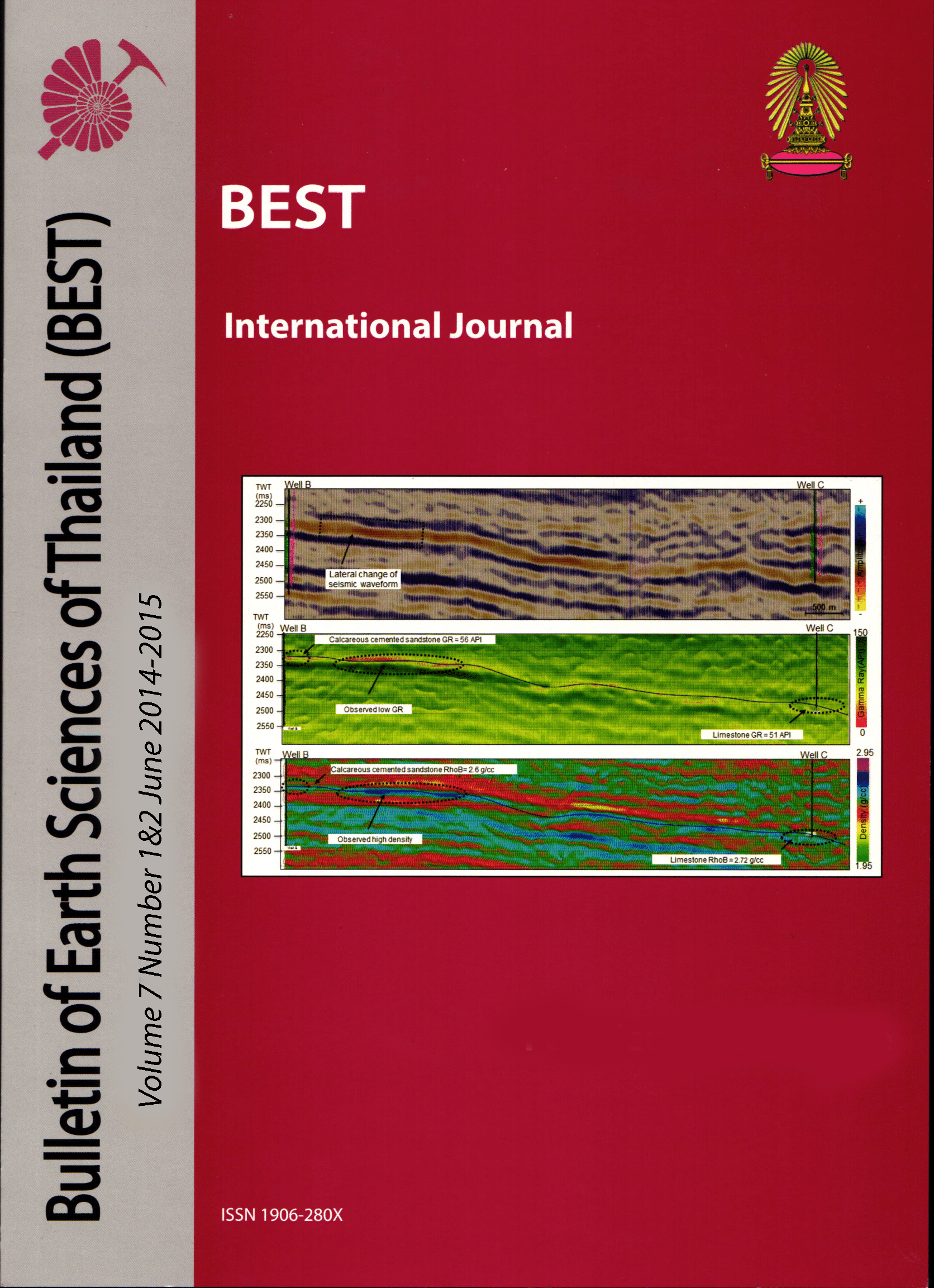DEPOSITION AND DIAGENESIS IN A PERMIAN PLATFORM FRINGE ENVIRONMENT, MUAK LEK, THAILAND
Main Article Content
Abstract
Thailand hosts an abundance of Permian platform and basin carbonate sequences and outcrops. However locating a site that preserves a continuous sequence, from toe slope to reefal crest, has proved elusive. An area situated on the fringe of a Permian carbonate platform that captures such a continuous sequence was identified and is the focus of this study.
Found in the Muak Lek, Central Thailand, the locale is situated 280m downdip from a previously documented outcrop that proved to be a reefal crest. Downdip from this area of interest were deep water shales. This transitional zone was analyzed with regards to depositional history,
structural framework, and diagenetic processes.
Fieldwork and laboratory analyses revealed three distinct units. The first, the lowermost foundation of the platform, was revealed to be an accumulation of primarily crinoidal rudstones. This omnipresent facies is a talus unit that had been transported from another reef. These events are attributable to collapse of the outer rim of the adjacent platform and/or faulting.
The second unit was a biologically-mundane layered stacking of progradational rudstones, with upsection hints of increasing chert content. Stacking was demarcated by its chert abundance. The unit indicates a transitional zone for the basin talus accumulations and passes into the overlying third unit. The second facies reflects a slope, possible upper slope, environment.
The final and overlying third facies unit is comprised of boundstones with encrusters and bryozoa. In-situ corals and cementstones were evident. Relicts of sponge colonies were clustered above, below, and throughout. These varying pulses of biota collectively formed a mosaic texture. This unit was the topographic high of the entire formation studied, and more importantly, the local reefal crest.
Each facies unit experienced some degree of diagenetic alteration. Evidence comes in the form of calcite cements with sparry, fibrous, radial, and syntaxial texture. Ferroan calcite cement was found in the first facies unit. Isotope analyses revealed: early burial, late burial, and telogenetic
trends on a covariant O-C chart. However further inspection showed the reefal crest has oxygen values that did not exceed -10.47 O % VPDB. Units 2 and 3 cements experienced fluids evolvedwell beyond this, with upwards of -13.7 % O VPDB . This indicates both:
1) a relatively early porosity-shutdown in the crestal sediments
2) that they did not experience significant crossflows of late burial fluids
Contextual sources corroborating these oxygen isotope values to be largely consistent with precipitation from relatively low temperature fluids, when compared to more thermally evolved oxygen isotope signatures in Saraburi carbonates sampled in more structurally complex settings, (Ampaiwan, P., 2011, Kuenphan, N. 2011, Thanudamrong, S., 2011).
Article Details

This work is licensed under a Creative Commons Attribution-NonCommercial-NoDerivatives 4.0 International License.
Copyright © 2008 Department of Geology, Faculty of Science, Chulalongkorn University. Parts of an article can be photocopied or reproduced without prior written permission from the author(s), but due acknowledgments should be stated or cited accordingly.


